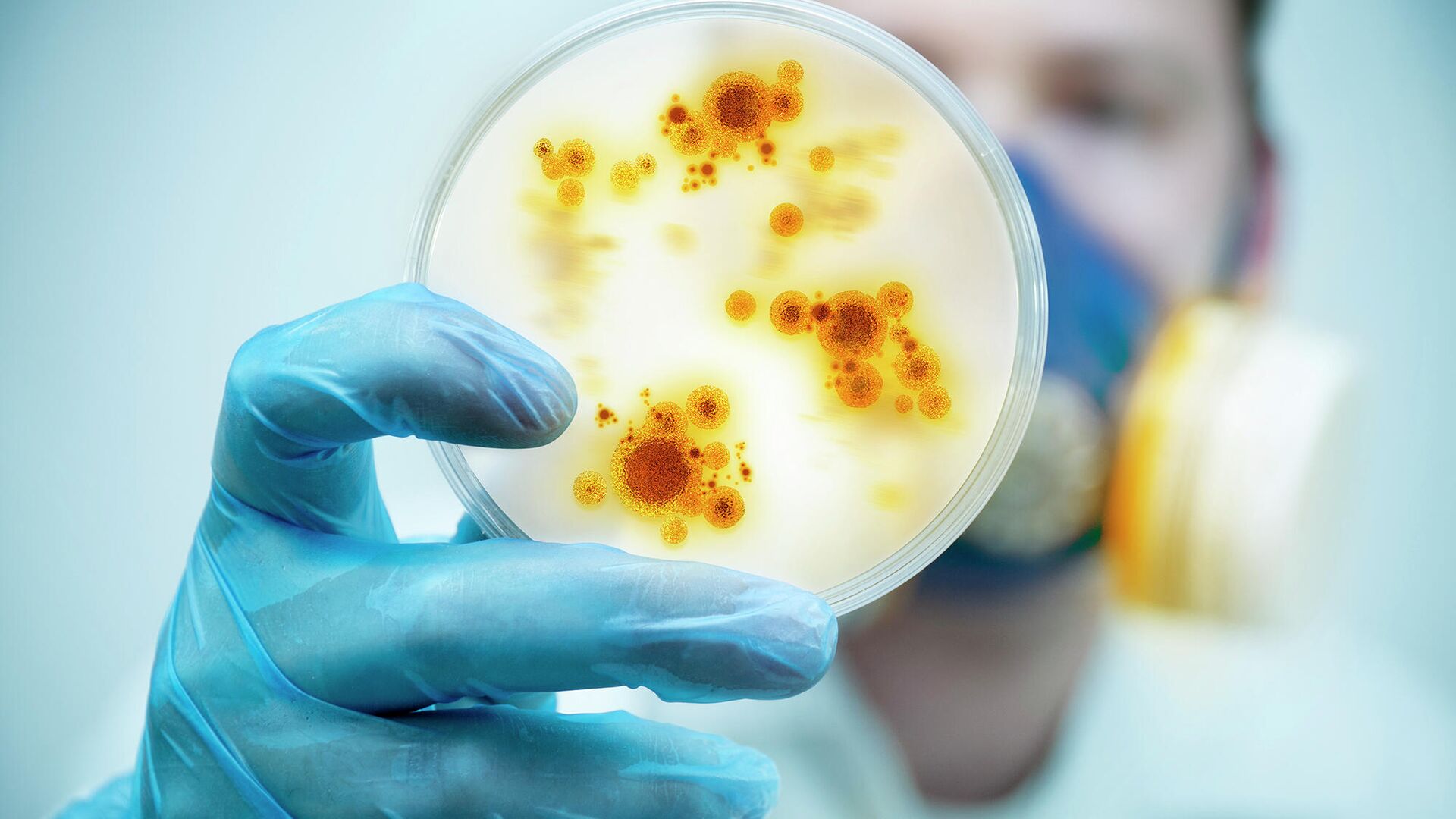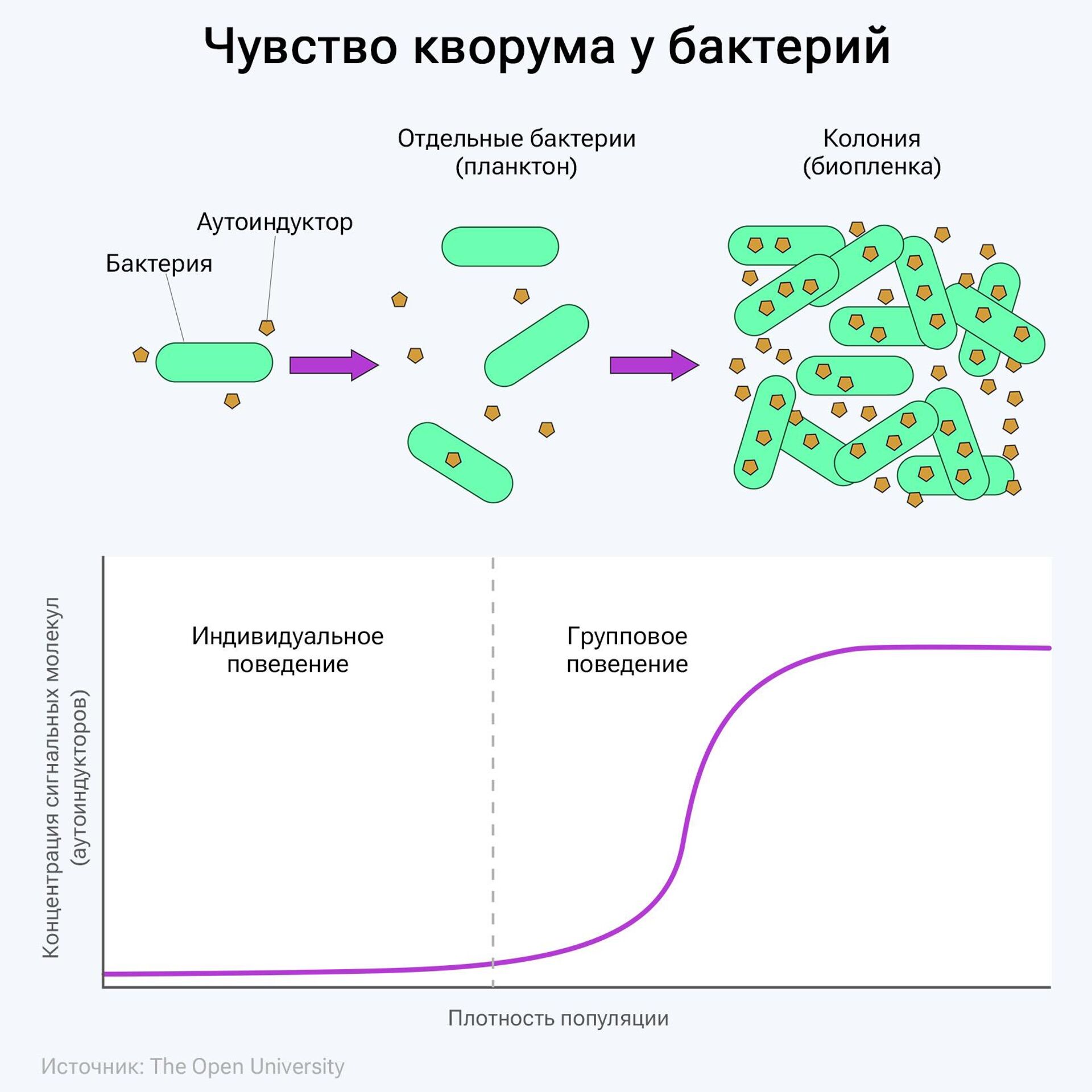
< br />
MOSCOW, November 29, Vladislav Strekopytov. Some microorganisms have not only a collective intelligence, but also memory, and sometimes “memories” are inherited. American scientists came to this sensational conclusion. The discovery could be a starting point for developing new strategies to combat bacterial resistance to antibiotics.
Collective intelligence
In the mid-1960s, biologists noticed that under certain circumstances — stress or changes in environmental conditions — bacteria demonstrate the ability to self-organize, and their communities behave as a single whole.
The concept of collective microbial intelligence was born, based on based on the assumption that bacterial colonies are similar in organization to neural networks. Microorganisms that receive input in the form of chemical signals process them and transmit them to other members of the colony.
The founder of the scientific direction that studies communication connections between microorganisms — sociomicrobiology — was the American biologist Everett Peter Greenberg. In 1994, he proved that gene expression, and therefore the behavior of bacteria, changes depending on the number of cells. The scientist called this mechanism of interaction quorum sensing.
Under certain conditions, bacteria release peptides into the environment known as autoinducers. If the density of the bacterial population increases, their concentration also increases. When it reaches a certain level, the autoinducer can trigger the transcription of specific genes in all cells of the bacterial colony. A sharp release of autoinducers and the resulting feedback mechanism record the transition from the independent (planktonic) existence of microorganisms to group behavior.
From biofilms to cellular memory
Further research led Greenberg and his colleagues to the discovery of biofilms, which arise from the association of thousands and millions of bacterial cells. Biofilms can form both on inorganic surfaces and on living tissues — teeth, the inner walls of the intestines, as well as in the respiratory tract and lungs.
Film colonies have a lot of biological advantages compared to individual microorganisms. With an area arrangement, access to nutrients increases, and resistance, including to the effects of antibiotics, increases noticeably. In addition, bacteria, uniting into films, change their surface antigens, and they are no longer recognized by the immune system.
It is noteworthy that bacteria of different species can jointly participate in the formation of film colonies. Intractable bacterial infections — intestinal, pulmonary, urogenital, gynecological — are often associated with the formation of such multipathogenic biofilms.
In 2020, scientists from the University of California at San Diego, led by Professor of the Department of Molecular Biology Gürol Zuel, described a new form of communication inside biofilms. By observing colonies of Bacillus subtilis, they discovered that the bacteria exchange information and coordinate their actions not only chemically, but also using electrical signals passing through ion channels.
It turned out that the transmission of these signals changes the properties of cell membranes and bacteria can thus store information about past states. Scientists have suggested that such changes serve as a form of collective bacterial memory. The fact is that brain cells—neurons—react to electrical signals in approximately the same way.
Memory of generations
Bacterial memory, based on membrane potential, can be called working, or operational. Changes in membrane proteins persist for several hours after the initial electrical or light pulse and then disappear. But recently, biologists from the University of Texas at Austin and the University of Delaware discovered that bacteria organized in biofilms are capable of storing information for a long time and even transmitting it from generation to generation.
The object of the study was Escherichia coli colonies. These bacteria are one of the most well-studied life forms on Earth. Scientists have discovered that they have an analogue of a memory system that allows them to preserve their entire life and pass on certain information about the environment by inheritance.
In the first stage of the experiment, the authors exposed Escherichia coli cells to various factors to see under what conditions they self-organize better. It turned out that the most important condition for the formation of biofilms is the level of iron inside the cells. With its deficiency, bacteria gather in so-called swarms and, with the help of flagella, rush in the direction of increasing concentrations of this element.
By changing the iron content in the environment, biologists have learned to control the “swarming” of bacteria. At the same time, they noticed that more “experienced” microorganisms, which had already experienced a deficiency of cellular iron, were the next time faster than others to unite and move towards its source.
Continuing their observations, scientists found that “memories” of how to behave in a crisis situation were preserved in the descendants of “experienced” bacteria for at least four generations, and by the seventh they disappeared irrevocably. This is the first officially confirmed fact of the presence of hereditary memory in microorganisms.
In search of the bacterial code
Biologists consider bacterial memory to be the most important mechanism that ensures the adaptation and evolution of microbes in changing environmental conditions. In particular, this memory plays a critical role in the development of resistance to antibiotics, which has become one of the most pressing problems of modern medicine.
The researchers note that antibiotic-resistant bacterial cells tend to have balanced iron levels. That is, they are as stable as possible and easily form film coatings. There is a possibility that by controlling iron levels, it is possible to influence pathogens, reducing their resistance.
At the next stage of research, Californian scientists plan to fully understand the molecular mechanisms of bacterial memory formation.
“Bacteria do not have neurons, synapses or a nervous system, but they can collect information from the environment, store this data and quickly access it later for their own benefit,” said the first author of the article, Souvik Bhattacharya, a research fellow at the department, in a press release. in molecular biology from the University of Texas «Ultimately, the more we know about the behavior of bacteria, the easier it is to fight them. Iron levels, which determine the virulence of pathogens, may become a target for therapy.»
The authors suggest that the mechanism of accumulation and The storage of information in bacterial cells is somewhat similar to the principle of computer memory. And the code that programs the complex behavior of microbes in this case is the iron level. But there may be many more such coding factors. Scientists do not exclude the possibility that a biocomputer will appear in which information will be transmitted using electrical signals and recorded on the cell membranes of bacteria.

























































Свежие комментарии